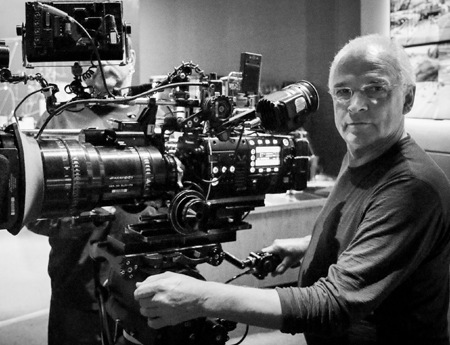Picture Perfect

While tests of 8K systems that promise 16 times the resolution of HD video have heated up this summer, future TVs (and smaller screens) will involve systems for higher dynamic range (HDR) and wider color gamut that produce eye-popping images with much more vivid colors and inky blacks.
“HDR really has more of a wow factor than 4K, because you need special circumstances to see the advantages of Ultra HD,” said Klaus Weber, senior product marketing manager for cameras at Grass Valley, which has done a number of tests with Dolby of HDR production of soccer and other sports.
“If you have a 50- or 55-inch TV set, the human eye needs to be about 1.5 meters from the screen to really see the increased resolution of a Ultra HD TV,” Weber added. “If you are sitting three meters way, which is where most people sit, then you need an 80-inch or 85-inch screen to really be wowed. But if you put an HDR image next to a standard image, anyone can see the difference.”
Those advantages prompted a number of consumer electronics firms to tout new Ultra HD TV sets with HDR and wider color gamut at International CES in January and convinced over-the-top online video providers like Amazon and Netflix to embrace HDR.
“Amazon and Netflix have the advantage of being independent production companies that have their own distribution channel,” said Ron Martin, VP and director of the Panasonic Hollywood Lab. “So they can be a little independent of some of the normal bottlenecks you usually see on the distribution side.”
THE ROAD TO HDR
Those initial steps reflect notable advances in camera, lenses and production systems and various HDR tests by Dolby and others going back several years.
Broadcasting & Cable Newsletter
The smarter way to stay on top of broadcasting and cable industry. Sign up below
Major camera manufacturers like Arri, Canon, Grass Valley, Sony and Panasonic now offer or will soon offer higher-end cameras that can handle 14 to 16 stops of dynamic range, which until recently was only possible with film. “We’ve come a long way in the last five years,” said Steve Mahrer, technology alliance manager/P2 product manager, at Panasonic System Communications, which offers the HRD capable VariCam 35 camera. “We’re now back to capturing everything fi lm could do.”
Lenses have also greatly improved. Thom Calabro, director of marking and product development in the Optic Devices Division of Fujifilm North America, noted that their newer lenses with high transmittance electron beam coatings (HTEBC) can produce vivid HDR images in both HD and 4K. “You can easily see the difference between the newer and older lenses,” he said.
Another notable advance can be found at Sony, which has begun selling the first OLED referencing monitoring system for HDR images. But vendors like Avid, Ikegami and Grass Valley also report that key parts of their production or post production systems for scripted TV production or movies can now handle HDR HD or 4K images. “We’ve been working very hard with camera manufacturers, Dolby and color management software providers to help accommodate these emerging trends,” said Dave Colantuoni, senior director of product management at Avid.
“Our position is that we are basically ready to do it now,” added Alan Keil VP of engineering for Ikegami, which is selling an HDK-97Arri that produces HDR images. “I would say the interest is significant but I do think it will take some time to work its way into the market.”
WAITING TO GO LIVE
The most obvious problems are in the distribution of content into the home. Only the newest high-end Ultra HD sets can display HDR images and it is difficult or impossible to transmit HDR images over traditional broadcast and cable infrastructures. Live production technologies also need work.
“Live production can be significantly more complex,” said Gary Mandle, senior product manager, at Sony Electronics. Unlike scripted production, where TV drama producers can work from a 4K HDR master to produce different versions for TV and other outlets that can’t handle HDR, sports producers would have to simultaneously create versions for both HDR capable sets and regular HD screens.
Standards are another key issue. The Society of Motion Picture and Television Engineers (SMPTE) has established the SMPTE 2084 standard for HDR and the Blu-ray Association has adopted a specification for Ultra HD content with HDR and wider color gamut. “The industry is coming together on this and you’ll see the first product in the market in the next six months,” said Martin at Panasonic.
But Mandle at Sony cautions that there are a number of competing approaches that need to be standardized, with Dolby, BBC/NHK, Technicolor, various set manufacturers, and others offering different proposals. “On the broadcast side, everyone has been standing back and seeing how things develop,” he said.










